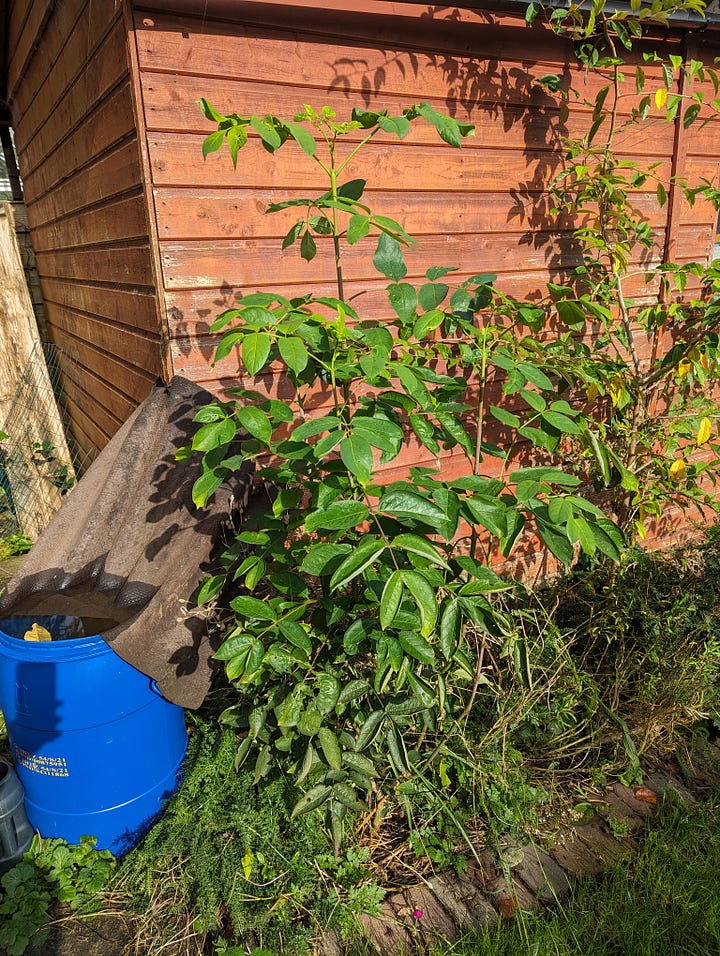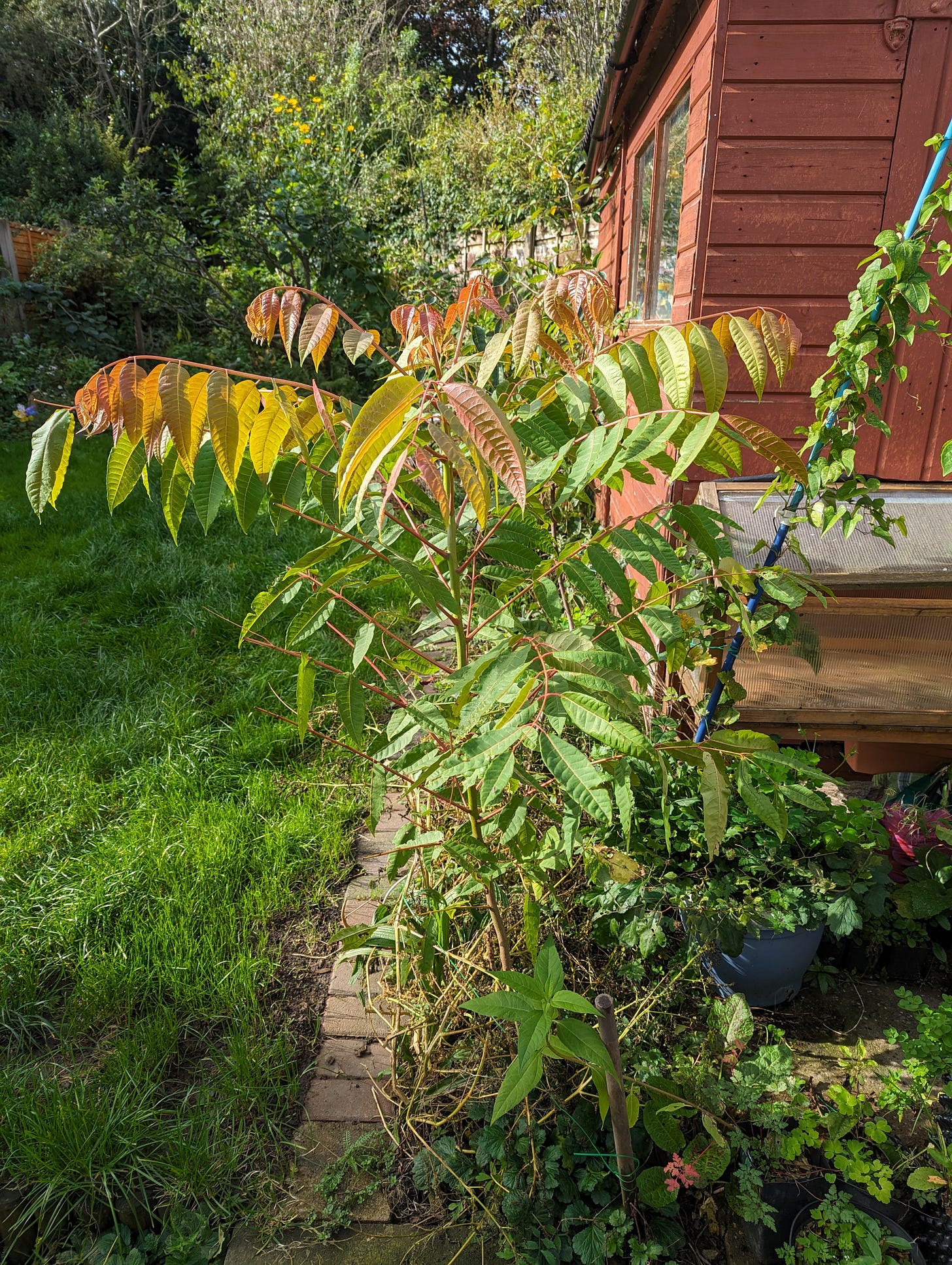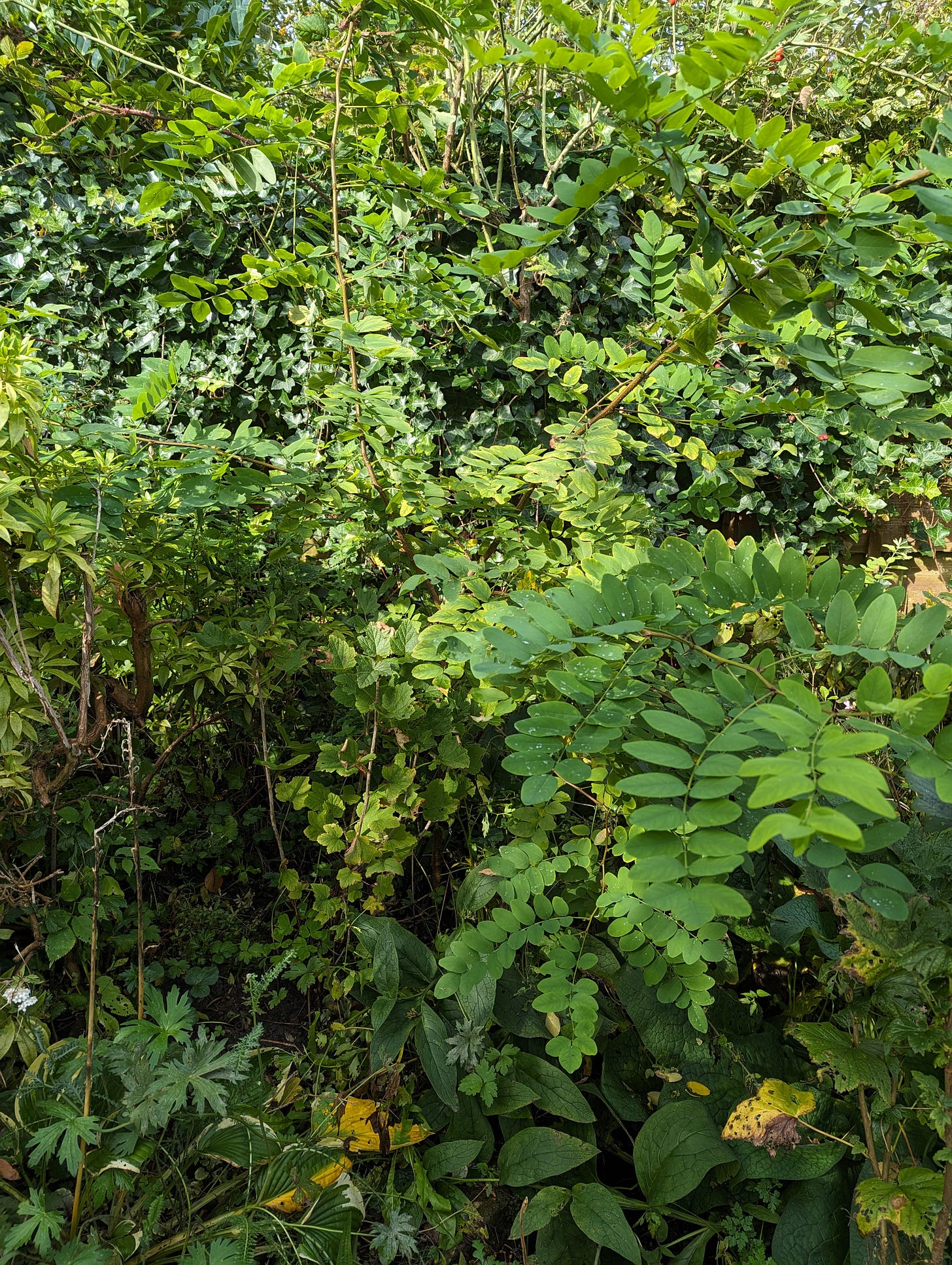There’s a saying in gardening circles concerning perennial plants.
First they sleep, then they creep, then they leap.
When I encountered this saying, three years ago, I didn’t want it to be true. I didn’t want to wait three years while the amazing tree I sourced decided to leap into the skies.
I probably looked at my baby tree sapling trees multiple times a day, willing them to leap up.
It turns out that willpower and time are not interchangeable.
In this small article, I’ll post a few pictures of the saplings that survived the three years from the initial establishment of my tiny food forest. Some didn’t survive and I mourn them still, but life moves on.
Elaegnus Umbelleta
I was sure that this Autumn Olive was going to die. I had read that it fixed nitrogen and grew quickly, but it barely twitched for two years. Just a 10 cm sapling, until this year where it absolutely exploded into the sky. Maybe we’ll get fruit next year. I’m told that Autumn Olive jam is delicious.
Sambucus nigra
I was not sure whether this Elderflower sapling was even alive. It had the odds stacked against it, on the north side of the fence and over-shaded by Cherry Laurel (Prunus lauroceracus). This year it had a growing competition with the other saplings and exceeded most of their heights. A much more impressive showing given that the others were planted in sunny aspects.
Toona sinensis
No, this isn’t a Tree of Heaven. I’m mad but not that mad (yet). Though, if any plant should be turned to human consumption, it should be this indefatigable tree. The tree in this picture is known by several names: Chinese Mahogany (yes, the only Mahogany tree that can be grown in the northern hemisphere) and also the beef and onion tree - I harvest it regularly for gentle frying with eggs or stir fry. I thought last year’s cold winter finished it off, but it just sent up a gigantic shoot from the main stem.
Staphylea pinnata
I planted a Common Bladdernut next to the Autumn Olive three years ago. In the same year of planting, this little sapling barely escaped a wind torn Leylandii tree (a tale for another time). I’m hoping to taste the allegedly pistachio tasting seeds one day. I’m told squirrels leave these alone, but time will tell.


Robinia pesuoacacia
Black Locust trees have a reputation for rapid growth, but as you’ve seen, the pattern we’ve observed is three years before explosive growth. Perhaps I’ve helped things along by tending the soil with dead and living mulch.
Final Thoughts
I’ll be posting shorter articles for a while as I recover from some surgery (planned, not to worry).
Until next time.








Chinese mahogany sounds interesting, especially being an edible! I'm very proud of your elderflower!!! Grow! Grow! Mighty little plant! Black locust is my favorite tree, here sadly people took to stealing them!! Yes, stealing them, because they make such amazing wood, sad but a testament to their beauty. Any tree that makes something that even remotely tastes like pistachio I automatically like. As for Autumn Olive I love the training and am fascinated to hear someday how it tastes.